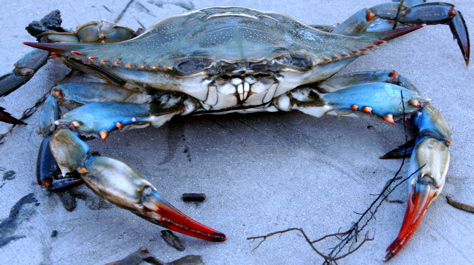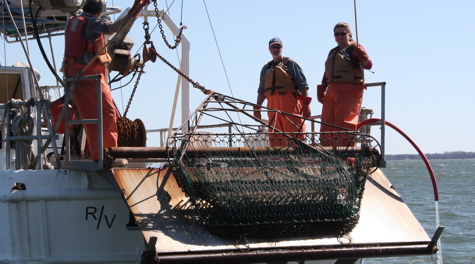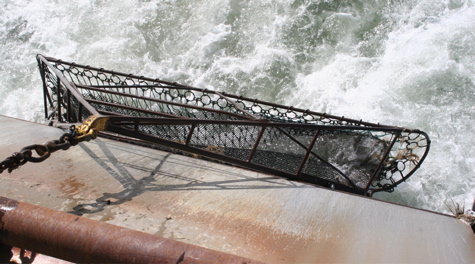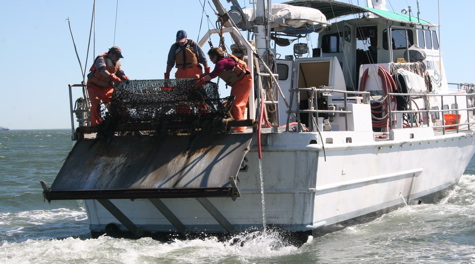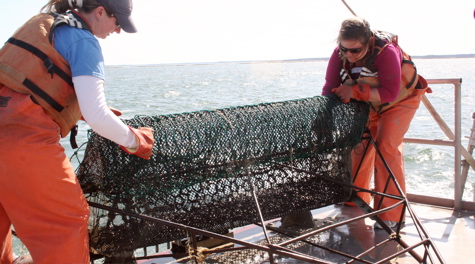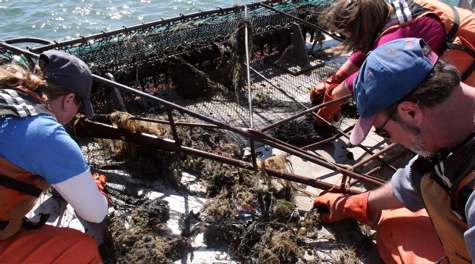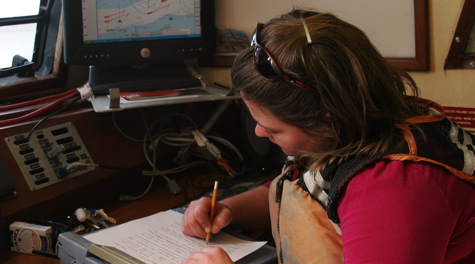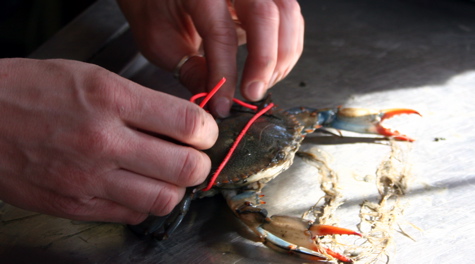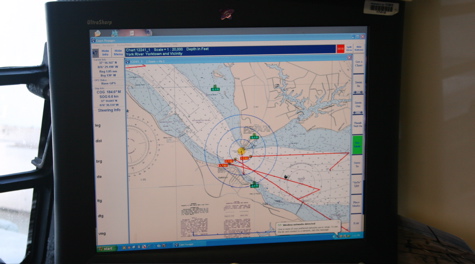Survey shows blue crab population above target for third straight year
Stock at second highest level since 1997; rebuilding continues
Virginia and Maryland fishery managers today announced that Chesapeake Bay’s blue crab population is at its second highest level since 1997 and well above the target for the third year in a row.
The population estimate is the result of the 2010-2011 bay-wide winter dredge survey conducted annually by the Virginia Institute of Marine Science (VIMS) and the Maryland Department of Natural Resources (DNR).
The results of the 2011 Blue Crab Winter Dredge Survey indicate that management measures put into place in 2008 to conserve female crabs are continuing to pay dividends for the crab population, the seafood industry, recreational crabbers, and those who just plain enjoy the Bay’s favorite crustacean. Overall crab abundance, however, declined due to this past winter’s deep freeze that killed as many as 31 percent of Maryland’s adult crabs, compared to about 11 percent in 2010.
“Clearly, we’re on the right path and this drop in crab abundance just means it will take a bit longer to completely rebuild the stock. I’m heartened that, despite a large number of dead crabs due to the winter weather, the stock remains in better shape now than it has been at any point since 1997. Consumers should continue to enjoy crab cakes and she crab soup. There are plenty of crabs,” said Doug Domenech, Virginia’s Secretary of Natural Resources.
At 460 million crabs, the Chesapeake Bay’s blue crab population is at its second highest level since 1997, and nearly double the record low of 249 million in 2007. And, for watermen across the Bay, the unusually high crab abundance last year translated into a harvest of more than 89 million pounds—the highest since 1993.
“The Bay’s blue crab population is healthy and now is showing signs of resiliency, thanks to our stock-rebuilding efforts with our Maryland partners. We cannot control the weather. It was a harsh winter and crab mortality was higher than normal. In fact, it was the worst we’ve seen since 1996. Thankfully, we acted when we did in 2008 to begin rebuilding the crab populations, or the crab census results we see today would be grim indeed,” said Steven G. Bowman, Commissioner of the Virginia Marine Resources Commission.
“This drop in abundance should be viewed as a speed bump in our stock rebuilding program, and just means it will take a bit longer to get to where we want to be with a stabilized crab stock of high abundance,” Commissioner Bowman added.” Some stock management challenges remain, but the evidence shows we’re going in the right direction.”
The survey also reports that 254 million adult crabs survived an unusually cold winter in the Chesapeake, above the current population target for the third year in a row. This marks the first time since the early 1990s that the Bay has seen 3 consecutive years with the adult population above the target level of 200 million crabs and the harvest below the target of 46 percent.
“Today we continue to realize the benefits of the very tough decisions we made three years ago, benefits that are bringing us closer to our ultimate goal: a self-sustaining fishery that will support our industry and recreational fisheries over the long term,” said Maryland Governor Martin O’Malley.
Dr. Rom Lipcius, who directs the Virginia component of the dredge survey for VIMS, said the latest survey results show the effectiveness of the crab stock rebuilding program.
"This is further proof that the crab population continues to respond to unprecedented management actions, such as the closure of the winter dredge fishery, by the Virginia Marine Resources Commission and partner agencies,’’ he said. “The stock’s improved status from just a few short years ago is neither a random event nor a reflection of improved environmental conditions.”
Estimates of abundance are developed separately for young of the year crabs, mature female crabs, and adult male crabs. Together, these groups of crabs will support the 2011 fishery and produce the next generation of crabs.
Preliminary harvest numbers in the 88-94 million-pound range confirm that a healthy harvesting industry can coexist with regulations designed to rebuild a self-sustaining, healthy blue crab population.
Through a historic collaboration in 2008, Maryland, Virginia, and the Potomac River Fisheries Commission took strong, coordinated action to reduce harvest pressure on female crabs by 34 percent. At that time, scientists deemed conservation measures necessary as blue crab suffered near historic lows in spawning stock.
“The coordinated management of blue crabs since 2008 clearly demonstrates the conservation gains that can be achieved when Chesapeake Bay jurisdictions act collectively toward a common vision–in this case a healthy blue crab population and sustainable fishery, said Peyton Robertson, director of the NOAA Chesapeake Bay Office.
In September 2008, NOAA’s National Marine Fisheries Service responded to Virginia’s and Maryland’s request for disaster assistance funding for watermen impacted by the declining blue crab population.
Blue Crab Winter Dredge Survey
The primary assessment of the Bay’s blue crab population is conducted annually by the Virginia Institute of Marine Science (VIMS) and the Maryland Department of Natural Resources. Since 1990, the survey has employed crab dredges to sample blue crabs at 1,500 sites throughout the Chesapeake Bay from December through March. By sampling during winter when blue crabs are buried in the mud and stationary, scientists can develop, with good precision, estimates of the number of crabs present in the Bay.
“Crab reproduction can be volatile, and can be impacted by wind, currents and weather. The evidence indicates we’ve succeeded in rebuilding the stock to a degree that it can withstand a perfect storm of rapid temperature drop as crabs move into their overwintering grounds in the lower end of the Chesapeake Bay, followed by a prolonged bout of cold weather,” said VMRC Fisheries Chief Jack Travelstead.
“The overall crab abundance is down a bit from what it was last year at this time, but let’s keep that in context. We saw a huge bay-wide harvest in 2010, the largest since the early 1990s, and despite that the stock abundance continues to be higher than we’ve seen in many, many years,” Travelstead said.

